For the 2025 school year, there is 1 public high school serving 533 students in Cannon County School District. This district's average high testing ranking is 3/10, which is in the bottom 50% of public high schools in Tennessee.
Public High School in Cannon County School District have an average math proficiency score of 12% (versus the Tennessee public high school average of 23%), and reading proficiency score of 33% (versus the 40% statewide average).
Public High School in Cannon County School District have a Graduation Rate of 92%, which is more than the Tennessee average of 90%.
The school with highest graduation rate is Cannon County High School, with 90-94% graduation rate. Read more about public school graduation rate statistics in Tennessee or national school graduation rate statistics.
Minority enrollment is 7% of the student body (majority Hispanic), which is less than the Tennessee public high school average of 42% (majority Black).
Overview
This School District
This State (TN)
# Schools
8 Schools
507 Schools
# Students
2,619 Students
327,116 Students
# Teachers
160 Teachers
21,160 Teachers
Student : Teacher Ratio
16:1
16:1
District Rank
Cannon County School District, which is ranked within the bottom 50% of all 147 school districts in Tennessee (based off of combined math and reading proficiency testing data) for the 2021-2022 school year.
The school district's graduation rate of 90-94% has stayed relatively flat over five school years.
Overall District Rank
#129 out of 147 school districts
(Bottom 50%)
(Bottom 50%)
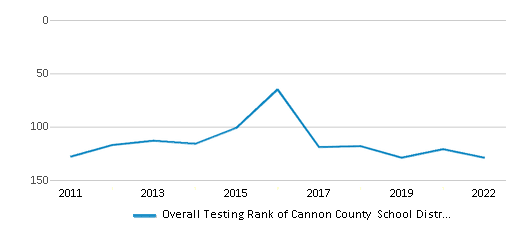
Math Test Scores (% Proficient)
17%
31%
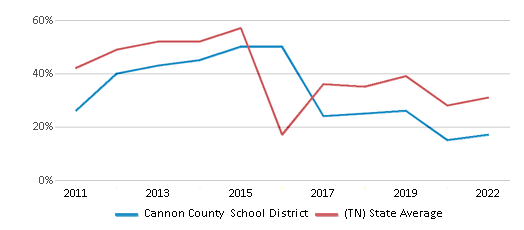
Reading/Language Arts Test Scores (% Proficient)
28%
37%

Science Test Scores (% Proficient)
28%
40%
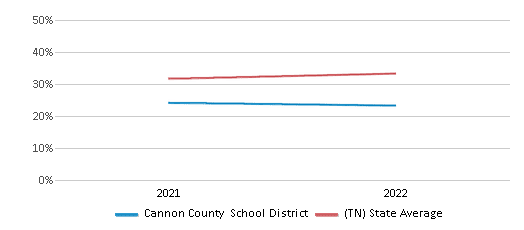
Graduation Rate
90-94%
90%

Students by Ethnicity:
Diversity Score
0.16
0.60
# American Indian Students
3 Students
563 Students
% American Indian Students
n/a
n/a
# Asian Students
8 Students
6,924 Students
% Asian Students
1%
2%
# Hispanic Students
112 Students
48,246 Students
% Hispanic Students
4%
15%
# Black Students
32 Students
66,689 Students
% Black Students
1%
20%
# White Students
2,405 Students
191,311 Students
% White Students
92%
59%
# Hawaiian Students
4 Students
351 Students
% Hawaiian Students
n/a
n/a
# Two or more races Students
55 Students
13,032 Students
% of Two or more races Students
2%
4%
Students by Grade:
# Students in PK Grade:
148
912
# Students in K Grade:
246
872
# Students in 1st Grade:
193
902
# Students in 2nd Grade:
223
947
# Students in 3rd Grade:
220
981
# Students in 4th Grade:
200
1,031
# Students in 5th Grade:
231
1,744
# Students in 6th Grade:
209
4,748
# Students in 7th Grade:
209
7,652
# Students in 8th Grade:
207
8,282
# Students in 9th Grade:
137
77,036
# Students in 10th Grade:
143
77,259
# Students in 11th Grade:
128
73,989
# Students in 12th Grade:
125
70,761
# Ungraded Students:
-
-
District Revenue and Spending
The revenue/student of $8,684 in this school district is less than the state median of $11,979. The school district revenue/student has declined by 28% over four school years.
The school district's spending/student of $7,775 is less than the state median of $11,478. The school district spending/student has declined by 28% over four school years.
Total Revenue
$23 MM
$12,104 MM
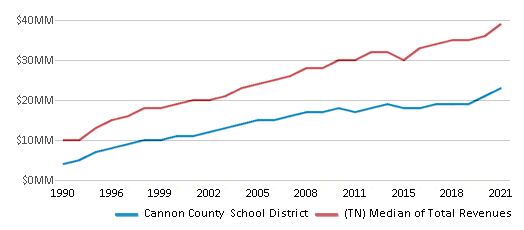
Spending
$20 MM
$11,597 MM
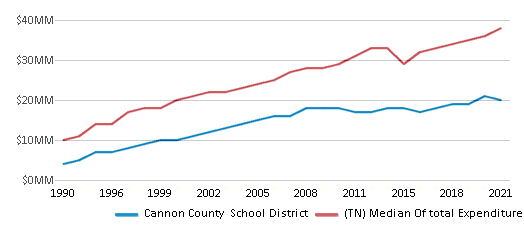
Revenue / Student
$8,684
$11,979
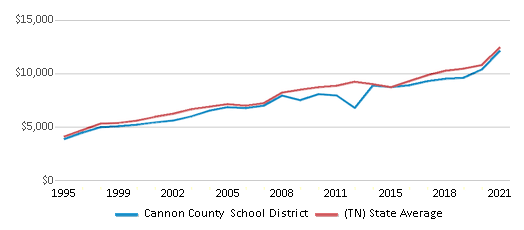
Spending / Student
$7,775
$11,478
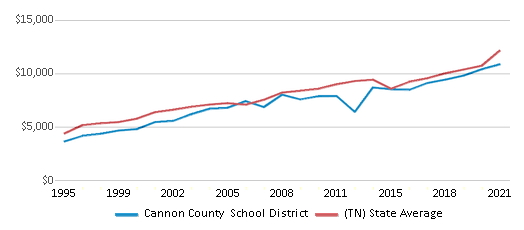
Best Cannon County School District Public High Schools (2025)
School
(Math and Reading Proficiency)
(Math and Reading Proficiency)
Location
Grades
Students
Rank: #11.
Cannon County High School
(Math: 12% | Reading: 33%)
Rank:
Rank:
4/
Bottom 50%10
1 Lion Dr
Woodbury, TN 37190
(629) 218-3197
Woodbury, TN 37190
(629) 218-3197
Grades: 9-12
| 533 students
Recent Articles

Sexual Harassment at Age 6: The Tale of a First Grade Suspension
A six-year old in Aurora, Colorado, was suspended after singing an LMFAO song to a little girl in his class and reportedly “shaking his booty.” We look at the case and the sexual harassment problem in public schools today.

How Scaffolding Could Change the Way Your Child Learns
This article explores the concept of instructional scaffolding, a teaching method that enhances learning by breaking down complex tasks into manageable parts. It highlights how scaffolding supports students in developing critical thinking skills and becoming more independent learners. The article discusses the benefits of scaffolding, including improved engagement and reduced anxiety, and provides strategies for its implementation across various educational levels.

February 05, 2025
Understanding the U.S. Department of Education: Structure, Impact, and EvolutionWe explore how the Department of Education shapes American education, from its cabinet-level leadership to its impact on millions of students, written for general audiences seeking clarity on this vital institution.





